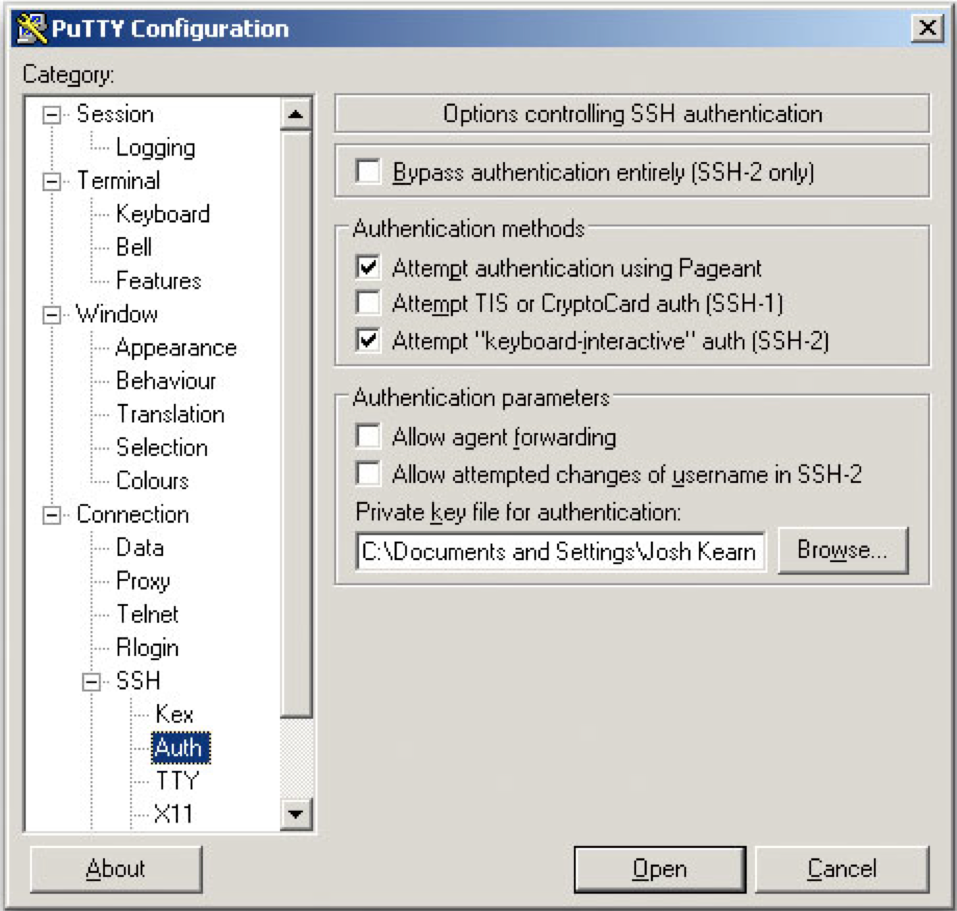Generate Ssh Rsa Key Centos
Generate RSA keys with SSH by using PuTTYgen
One effective way of securing SSH access to your cloud server is to usea public-private key pair. This means that a public key is placed onthe server and a private key is placed on your local workstation.Using a key pair makes it impossible for someone to log in by using justa password, as long as you set up SSH to deny password-basedauthentication.
This article provides steps for generating RSA keys by using PuTTYgen onWindows for secure SSH authentication with OpenSSH.
Sep 30, 2019 Generating public/private rsa key pair. Enter file in which to save the key. CentOS 8: SSH Server (01) Password Authentication (02) SSH File Transfer (CentOS) (03) SSH File Transfer (Windows) (04) SSH Keys Pair Authentication (05) SFTPonly + Chroot (06) Use SSH. Nov 20, 2019 Generate Public Key. This method involves generating an SSH key pair on the source machine and place it on the destination machine by login into it manually. First, login into the source machine and create an SSH key pair using the following command. email protected $ ssh-keygen. Output: Generating public/private rsa key pair. In case the -o option does not work on your server (it has been introduced in 2014) or you need a private key in the old PEM format, then use the command 'ssh-keygen -b 4096 -t rsa'. The -b option of the ssh-keygen command is used to set the key length to 4096 bit instead of the default 1024 bit for security reasons. This will generate a key pair for your system. Note: Administrators that have other users connecting to their sshd2 daemon should notify the users of the host-key change. If you do not, the users will receive a warning the next time they connect, because the host key the users have saved on their disk for your server does not match the host key. Aug 19, 2019 Steps to Creating SSH keys on CentOS Step 1: Create SSH Key Pair. Generating public/private rsa key pair. Step 2: Copy Public Key to CentOS Server. The fastest and easiest method is by utilizing. Step 3: Connect to Remote Server Using SSH Keys. Step 4: Disable Password Authentication. Jan 28, 2016 Generating new ssh keys Post by taylorkh » Thu Jan 28, 2016 2:29 pm When I clone an OS image to a new, identical hardware PC I of course need to change the host name in a couple of places on the new machine.
Generate keys
In Windows, use PuTTYgen to generate your public and private keys.
- If needed, download PuTTYgen from the PuTTY download page.(PuTTYgen might have been installed previously with PuTTY or WinSCP.)
- Launch the program, and then click the Generate button.The program generates the keys for you.
- Enter a unique key passphrase in the Key passphrase andConfirm passphrase fields.For additional information about using passphrases,see Log in with a SSH Private Key on Windows.
- Save the public and private keys by clicking the Save public keyand Save private key buttons.
- From the Public key for pasting into OpenSSH authorized_keys filefield at the top of the window, copy all the text (starting with ssh-rsa)to your clipboard by pressing Ctrl-C.You need this key available on your clipboard to paste eitherinto the public key tool in the Control Panel or directly into theauthorized keys on your cloud server.
Use the key pair
You can use the RSA key pair in the following ways.
Specify your SSH key when creating a new cloud server
When you create a cloud server, you can assign a public key from the list of keys.If your key is not already in the list, you may add it, and then assign it.
Add a new public key to the list
- Under Advanced Options on the Create Server page, click Manage SSHKeys.
- Select public key for the cloud server from the SSH Keys listand click Add Public Key.
- Enter the key name, select the region, and paste the entire publickey into the Public Key field. Then click Add Public Key.
- Go back to the Create Server page, and confirm that your key is listedin the SSH Key list.
Assign a public key
- Under Advanced Options on the Create Server page, select the publickey you want to use from the SSH key drop-down menu.
- When you are done specifying the all the other details for the server,click Create Server.
Assign your SSH Key to an existing cloud server

To make use of your newly generated RSA key pair, you must tell PuTTY touse it when connecting to your cloud server.
To edit the file (or create it), run the following command on the cloud server:
Paste the text onto its own line in the file.
You must have the key available in your clipboard to paste it. The key and itsassociated text (the ssh-rsa identified at the start and the comment at the end)must be on one line in the file. If the text is word-wrapped onto multiple linesan error might occur when connecting.
If you created the authorized_keys file, change its permissionsafter you’re done editing it by running the following command:
Open PuTTY, and go to the SSH > Auth section.
Browse to the location of the key file, and load the private key.
Go to the Session page, and save the session. This saves the configurationso that PuTTY uses the key every time that you connect to your cloudserver.
How To Generate Ssh Key Centos
After you save your session, your key is loaded automatically when youconnect to your server.
Related article
Experience what Rackspace has to offer.
©2020 Rackspace US, Inc.
Generate Rsa Ssh Key Centos
Except where otherwise noted, content on this site is licensed under a Creative Commons Attribution-NonCommercial-NoDerivs 3.0 Unported License
